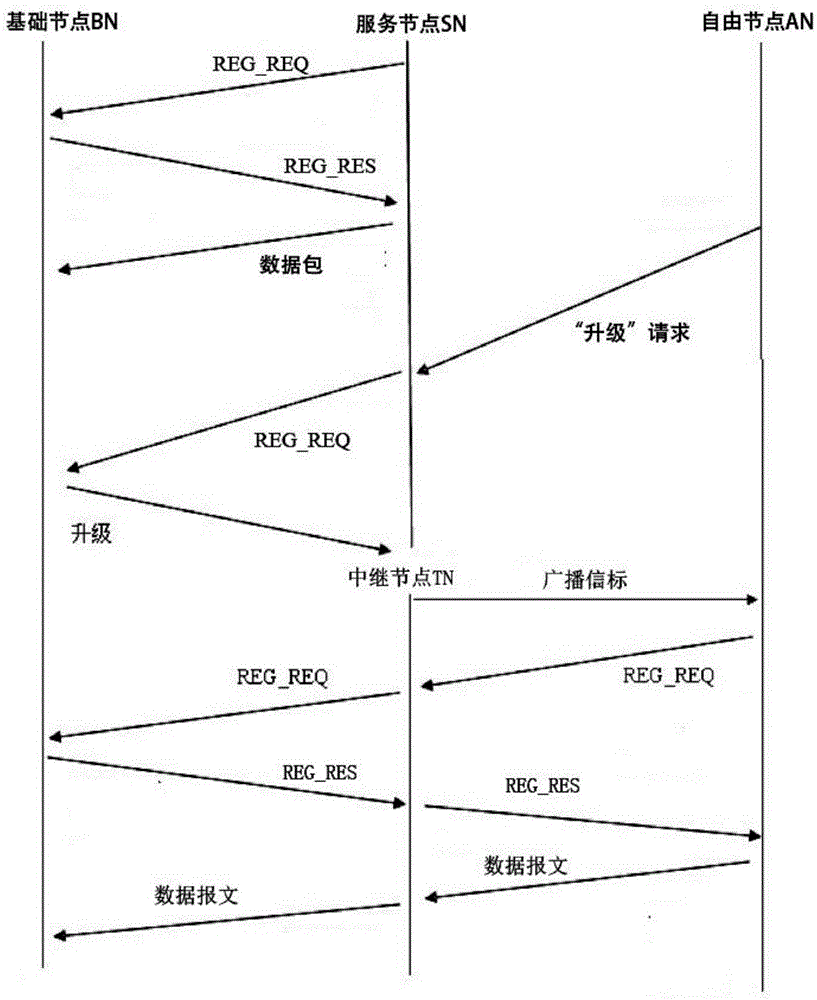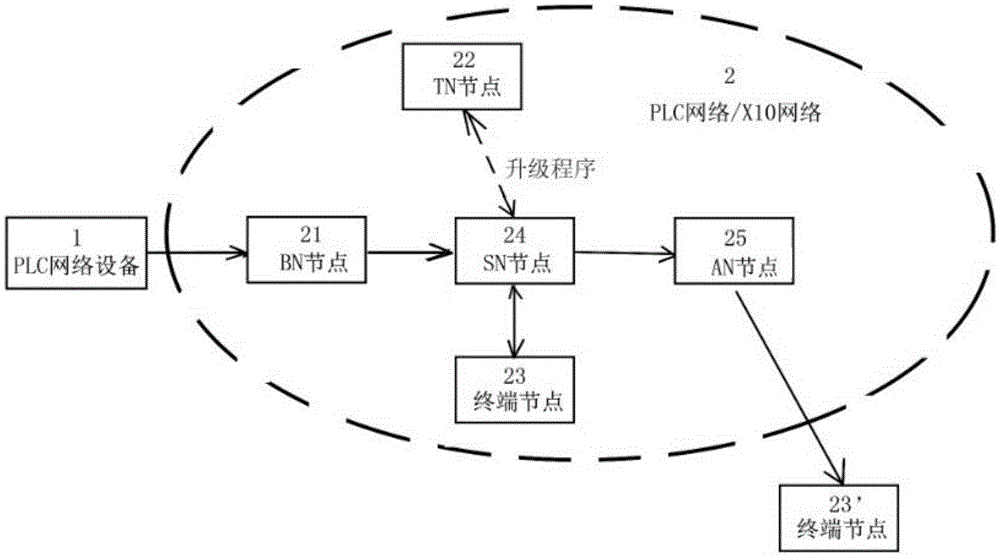Method and system for controlling network of household user equipment through power line
A home network and power line technology, applied in the direction of electrical signal transmission systems, signal transmission systems, instruments, etc., can solve the problems of non-adaptive adjustment, inability to realize multiple node control, single control mode, etc., and achieve the effect of reducing requirements
- Summary
- Abstract
- Description
- Claims
- Application Information
AI Technical Summary
Problems solved by technology
Method used
Image
Examples
example 1
[0022] Example 1: Power Line Carrier Control (PLC) bus mode
[0023] The embodiment of the present invention abandons the use of RS485 bus or general R-type bus, that is, master-slave equipment must be used for communication, and a protocol mechanism is specified on the conventional PLC bus: indoor household electrical equipment, such as portable PCs, televisions or Electrical equipment such as smart refrigerators and air conditioners are used as free nodes AN. Users can start one of the electrical equipment, such as a TV, and send a "registration" request through the interactive interface of the TV itself to establish a local area data network. If there is a device responding to the request REG_REQ in an indoor space, such as a portable PC, then the PC will serve as the basic node BN at this time.
[0024] For example, in order to realize an effective connection between a smart TV and a PC, a handshake circuit or a computer program can be set respectively, so that the communi...
example 2
[0039] Example 2: Digital wired dimming (DLT) bus method
[0040] DLT is also a bus protocol based on power lines, that is, it is also applicable to the adjustment communication of lighting equipment carried by power lines. Generally speaking, a control device CD (controldevice), bus (interface) and controller CG (controlgear) are designed in a DLT system, and the control device controls the controller through the bus to perform dimming operations. The coupled lighting device can obtain power through the bus, that is, this method is equivalent to the conventional master / slave device (MASTER-SLAVE) logic. Generally, multiple controllers and their lighting devices are connected in series.
[0041] According to the embodiment of the present invention, the aforementioned automatic "registration" request method can also be used between the control device CD and the controller CG, the difference is that the control conditions for the lamp are limited, such as brightness, color or c...
PUM
 Login to View More
Login to View More Abstract
Description
Claims
Application Information
 Login to View More
Login to View More - R&D
- Intellectual Property
- Life Sciences
- Materials
- Tech Scout
- Unparalleled Data Quality
- Higher Quality Content
- 60% Fewer Hallucinations
Browse by: Latest US Patents, China's latest patents, Technical Efficacy Thesaurus, Application Domain, Technology Topic, Popular Technical Reports.
© 2025 PatSnap. All rights reserved.Legal|Privacy policy|Modern Slavery Act Transparency Statement|Sitemap|About US| Contact US: help@patsnap.com



